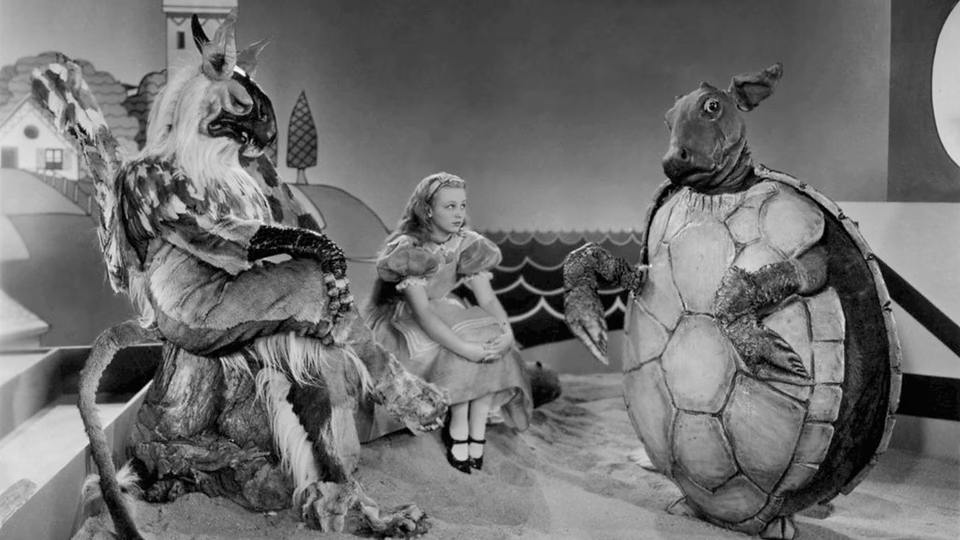Alice in Wonderland

This tone-deaf Paramount spectacle combines elements from Lewis Carroll’s Through the Looking-Glass and Alice’s Adventures in Wonderland.
We follow Alice, a young girl in Victorian England. One winter’s day, she steps through her mirror into a fantastical world of talking clocks and anthropomorphic chess pieces. Wandering outside, she floats down a rabbit hole into Wonderland, where she meets the Mad Hatter, the Queen of Hearts, Humpty Dumpty, and assorted other characters.
I watched this movie because it features an early performance by Cary Grant. Indeed, Paramount stacked this movie with almost every star in its stable. W. C. Fields, Jack Oakie, Edna May Oliver, and Gary Cooper all appear, though most—Grant included—are hidden behind full-masked costumes. According to Scott Eyman in Cary Grant: A Brilliant Disguise, Grant wasn’t even in the suit. He just dubbed the lines. Had I known this going in, I would have skipped it and saved myself the seventy-six minutes.
These costumes and masks, according to John Douglas Eames in The Paramount Story, were intended to resemble John Tenniel’s wood-engraved illustrations from the original Lewis Carroll books.
They do indeed bear a resemblance, but at the level of an amateur theater production, not a major studio motion picture. Visible seams, obstructed movement, and mismatched joints abound, as though the costumer had only days to prepare.
Surprising, given the optical effects are passable. Objects appear and disappear. Alice grows and shrinks. While these in-camera illusions never approach the bar set by King Kong (released the same year), they don’t embarrass like the costumes.
The best effect—and indeed the film’s lone bright spot—is all practical. When Alice encounters the “Drink Me” potion that grows her to a giant, the production rebuilt the entire set at a smaller scale, making Alice look gigantic in relation. An early example of practical effects besting in-camera optical.
As with the costumes, the script embarrasses. Devoid of any narrative or emotional stakes, Alice wanders around Wonderland with no purpose or urgency. This reduces the film to a series of disjointed skit-like encounters. At best they’re passable like Fields’ Humpty Dumpty. At worst they’re cringe-worthy, such as Cooper’s White Knight. Joseph Mankiewicz would later script Manhattan Melodrama and All About Eve, so we’ll chalk this up as a learning experience.
As Alice, then-unknown nineteen-year-old Charlotte Henry never convinces as a Victorian child, just a teen able to pass for a younger girl and recite the dialogue. I don’t fault her, given the likes of Grant and Cooper turn in similar stiff performances. This falls on director Norman McLeod, who seems tone-deaf to Carroll’s work.
All this leads one to suspect Paramount believed the whiz-bang camera tricks were enough to win over audiences. To those lamenting that modern movies have devolved into CGI spectacles devoid of story and talent, take solace. This film proves it’s nothing new.
Its dismal box office led some studio execs to conclude such fantasy films weren’t possible. But six years later, MGM would adapt The Wizard of Oz, with Judy Garland delivering an actual performance backed by memorable special effects and iconic costumes that allowed its stars to deliver complete performances. And fifty-three years later, Jim Henson and Terry Gilliam would deliver Labyrinth, which took a Carrollesque story, upped the narrative and emotional stakes, and utilized magnificent animatronic puppets for its creatures. Depending on your preference for classic or modern films, either option proves a drastic improvement over this disappointment.